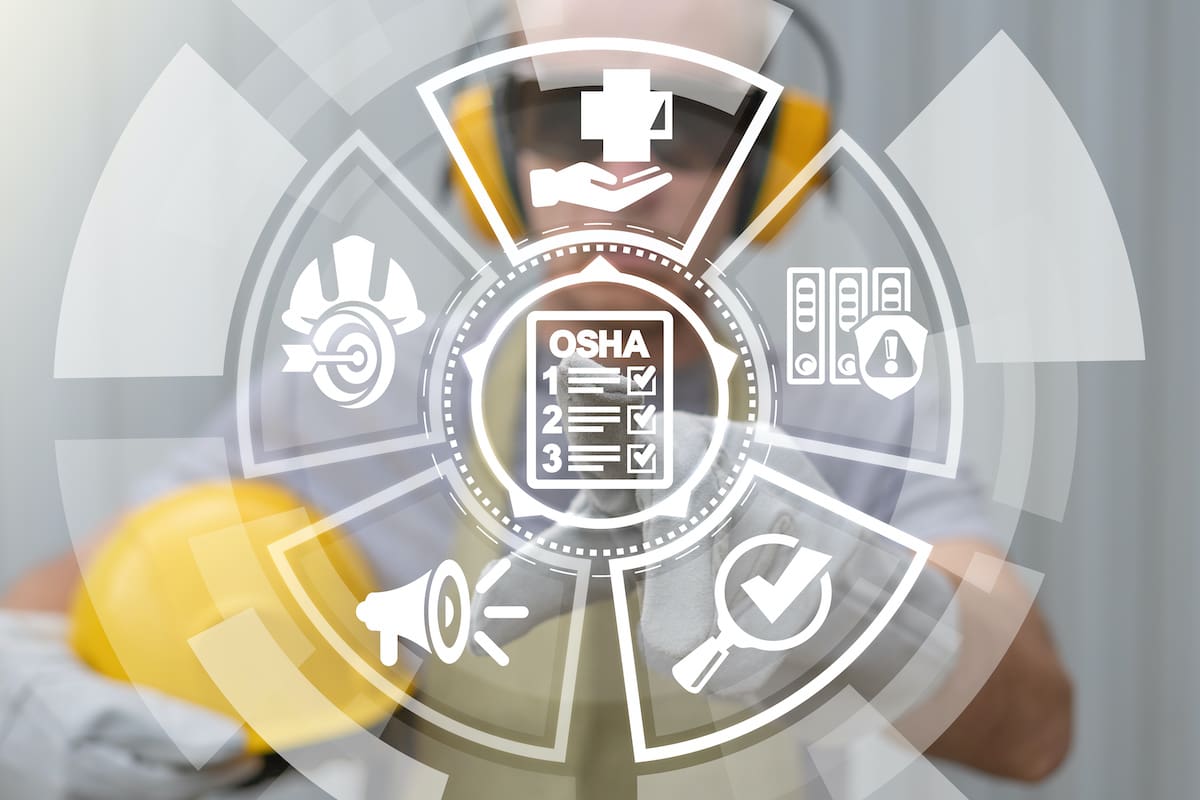When working with hazardous chemicals, employees must have the proper information and training regarding handling the chemicals, protecting themselves against risk, and understanding any outstanding safety concerns.
It’s no wonder that OSHA’s Hazard Communications Standards (HCS, otherwise known as HazCom) is the second-most cited federal workplace safety and health standard, exceeded only by the construction field’s fall protection standard. Between October 2018 and September 19 alone, OSHA cited the HCS upwards of 4,000 times across just 2,276 inspections.
HazCom requires companies handling these hazardous chemicals to disclose any pertinent information and offer any necessary training about the chemicals themselves. As an enforcement standard, HazCom helps employers protect their workers and understand the regulations surrounding their line of work.
To remain in compliance with HCS standards, you will need to uphold these three key elements:
1. Labeling Compliance
OSHA compliance officers, also known as CHSOs, will check carefully for label compliance with HCS while inspecting the facilities of importers, manufacturers, or distributors of hazardous chemicals.
They’ll be looking to see that the hazard classifications on labels and in SDSs meet OSHA’s standard while also checking for updated labels that include any significant new information about the chemicals and the risks they pose.
It’s critical to ensure your chemical labels include all of the following:
- Necessary hazard descriptions
- Chemical identity
- Contact information for the responsible party, including name and address
The goal of these labels is to inform employees of the hazardous effects of chemicals they may expose themselves to, so CSHOs may also conduct employee interviews to confirm their understanding of these labels.
2. SDS Compliance
During workplace inspections, OSHA CSHOs will check that employers have indexed an SDS for every hazardous chemical in their workplace. They’ll be hoping to find that all safety data sheets for all hazardous materials are present and that the information is both helpful and easy to access.
This information should be available in a comprehensive list of the hazardous materials on the premises. When creating your SDS inventory, take the time to do these four things:
- Physically take inventory of all chemicals on-site and build the list
- Check for SDSs currently on file
- For missing SDSs, contact the supplier or manufacturer and request a copy
- Keep documentation of this request on file until the SDS is finally received
The system that maintains your SDSs is also an essential part of the Hazard Communication Standards. This system should define the chemical hazards, classify them, and provide updated information for labels and safety data sheets. OSHA mandates that these SDSs must include the following:
- Chemical properties
- Health and physical hazards of the chemical
- Environmental health hazards
- Safety precautions for handling, transporting, and storing
- Protective measures
3. Training Compliance
Finally, CSHOs will also look for compliance with HCS regarding employee training requirements. They execute this by interviewing employees on the hazards of the chemicals they work with on-site and how to handle them safely.
Stay on the ball with a robust training program in addition to a written HazCom program that can be referenced as needed.
Your training program should feature:
- Discussion on SDSs, PPE, safety measures, and general chemical hazards, exposure response, and clean up protocol
- A variety of media such as interactive videos, audiovisuals, and classroom instruction
- A language and literacy level appropriate for the employees
- Training via chemical categories
- Training based on chemicals employees have the highest potential of interacting with
Trained employees should also feel confident about where they can find SDSs in the workplace and where to access their written HazCom program.
The written hazard communication program for your company must equip employees with the knowledge they need to understand the risks involved with the chemicals they typically handle and make sense of often complicated labeling and hazard symbols.
Within the written program, employees should be able to find:
- Labeling information
- Materials inventory
- The most updated revisions to new chemicals, new PPE, or new risks
This documentation should be readily available to all employees to reduce the chance of injury or illness caused by chemical exposure.
Next-Level Compliance With GSM
GSM compliance experts understand the challenges that hazardous materials compliance standards pose to companies like yours. We give hazardous chemicals manufacturers, importers, and distributors a leg up by providing SDS authoring and management solutions that allow you to streamline your supply chain while staying OSHA HCS compliant.
If you want to save time and money with less worry about compliance and more energy to focus on the core of your business, contact GSM today to learn more.


